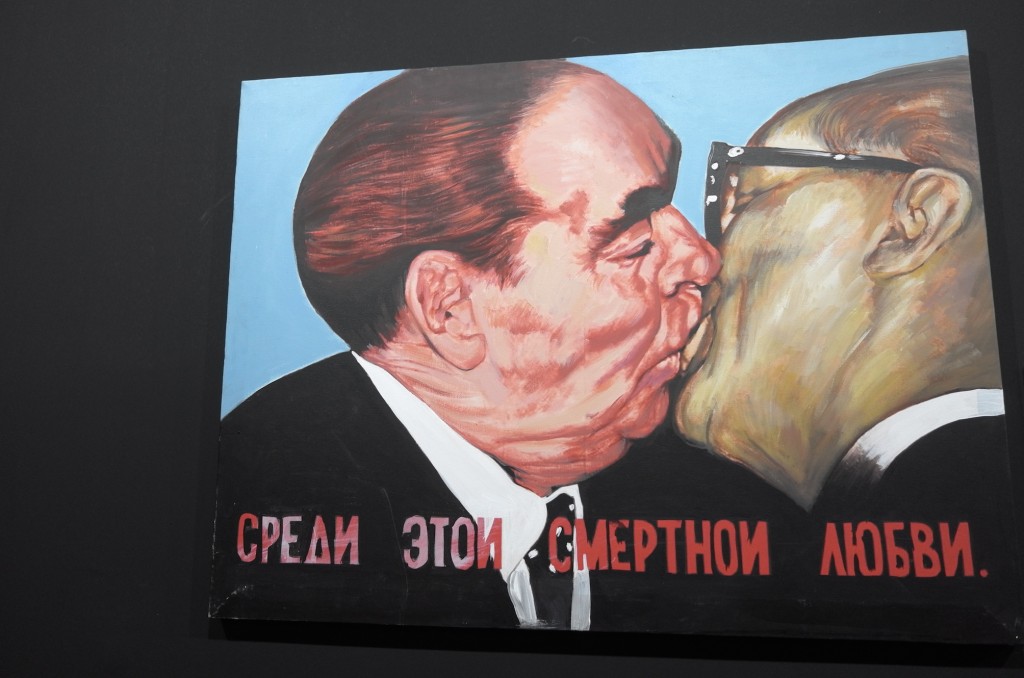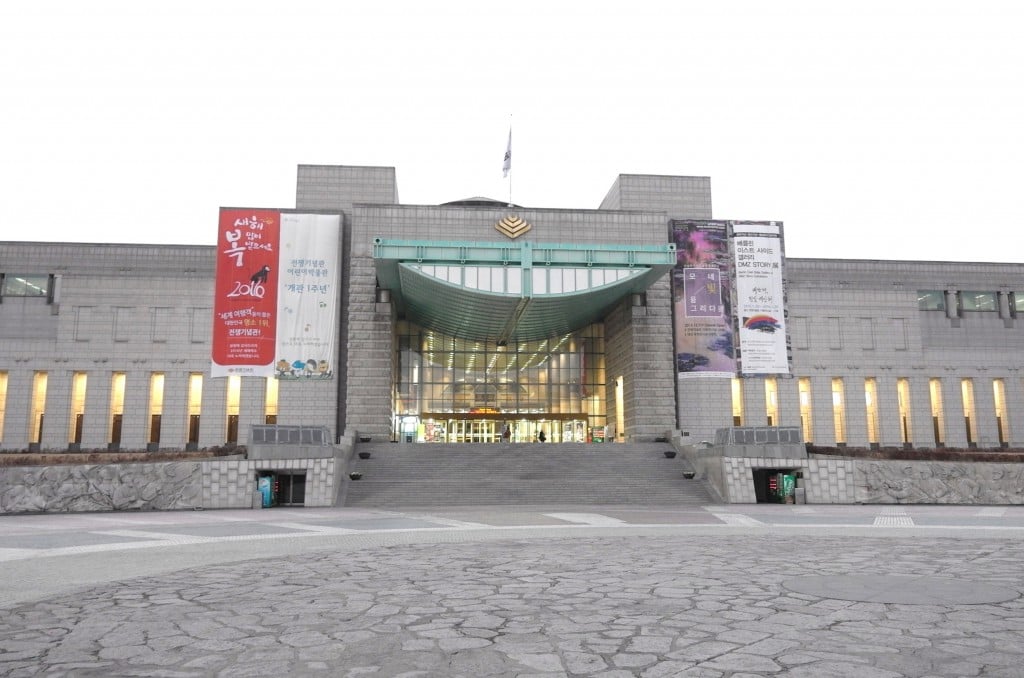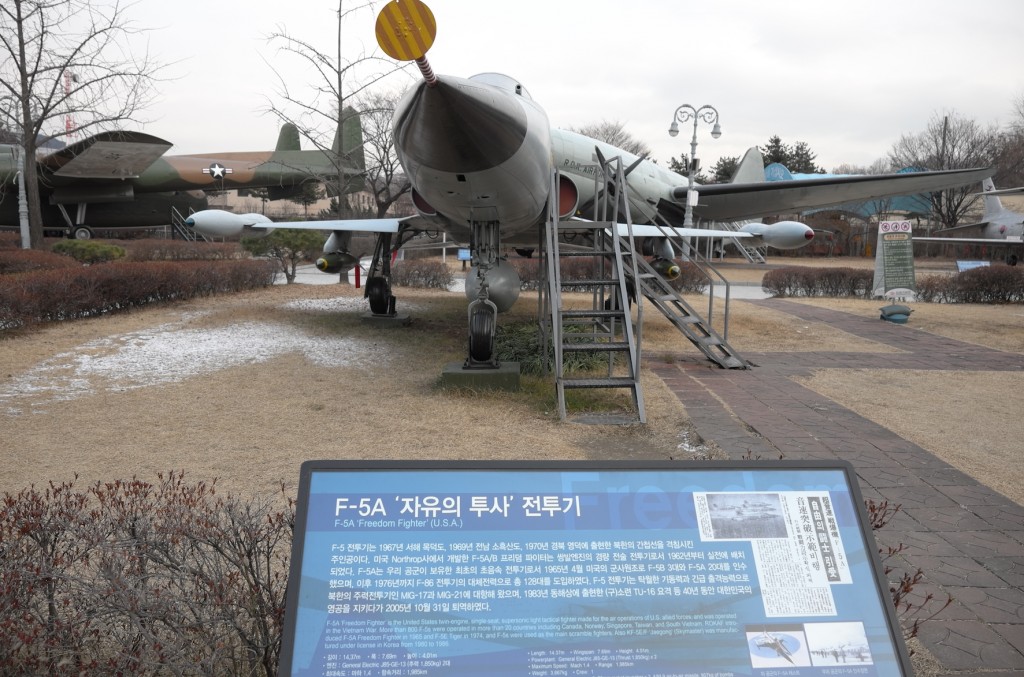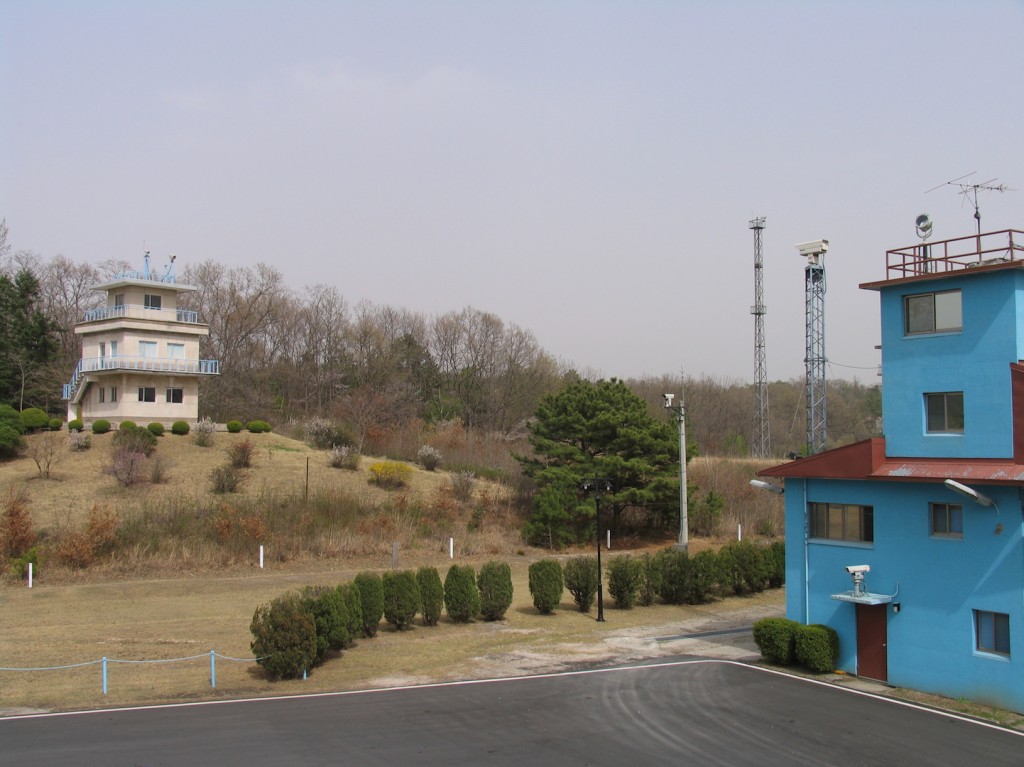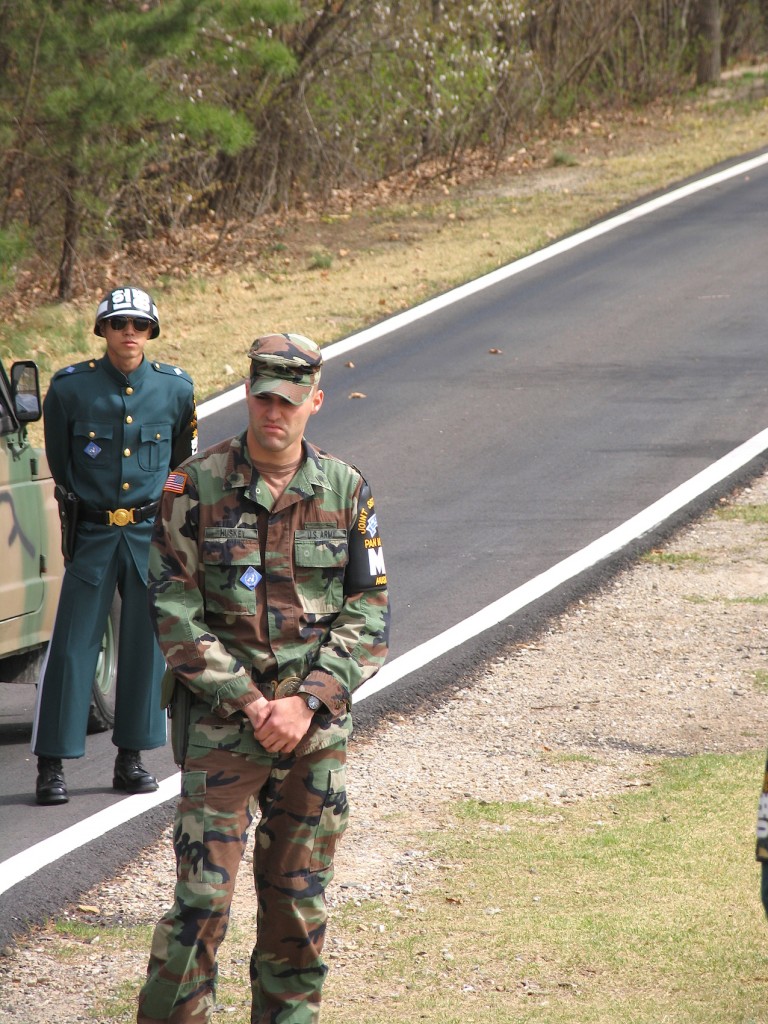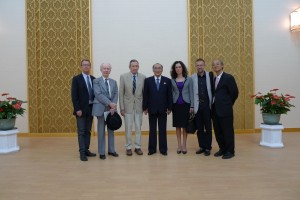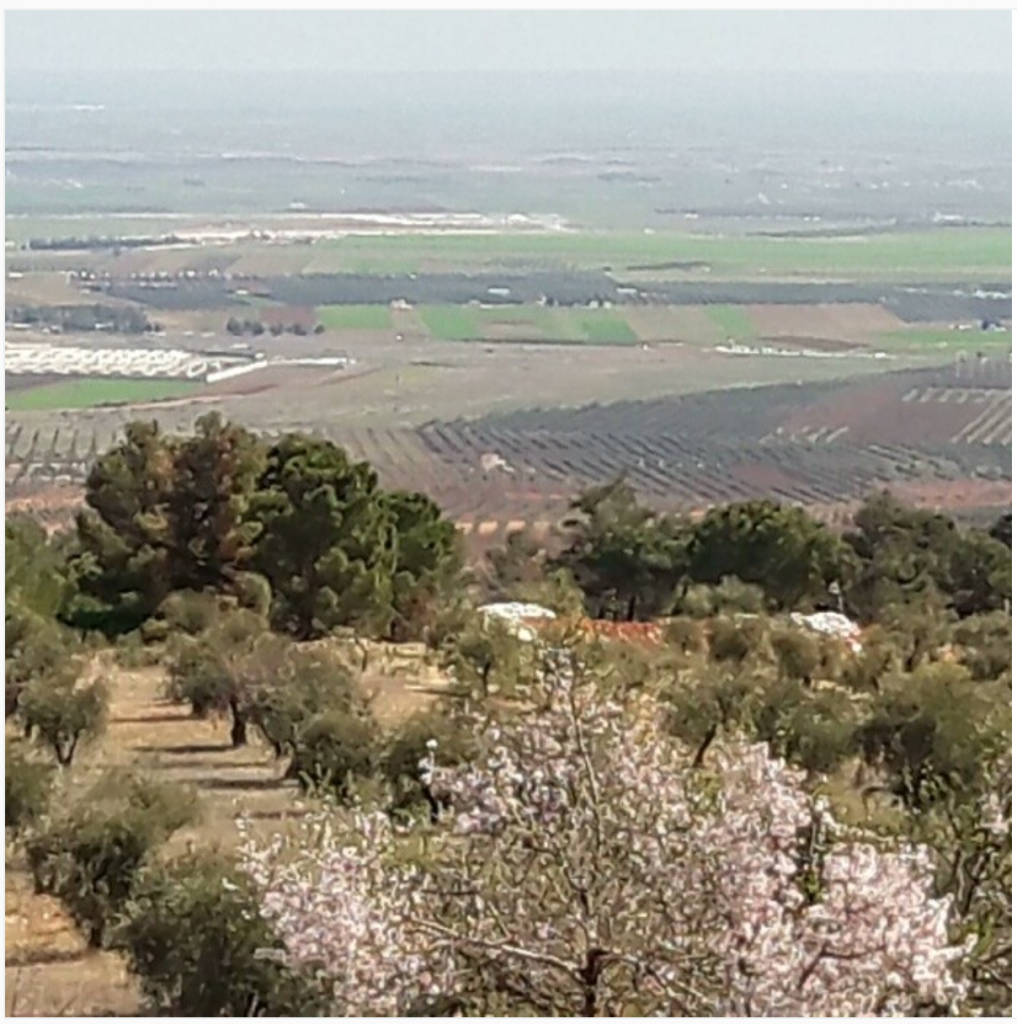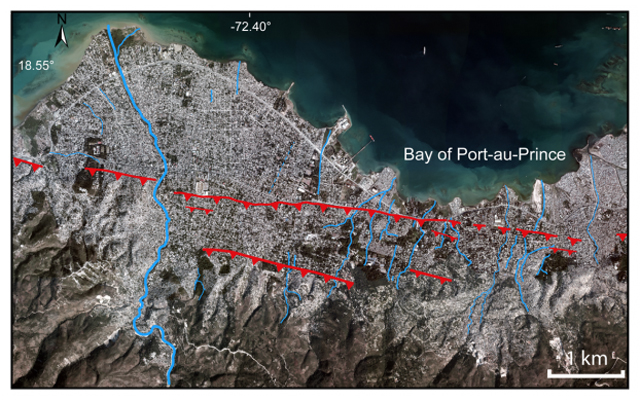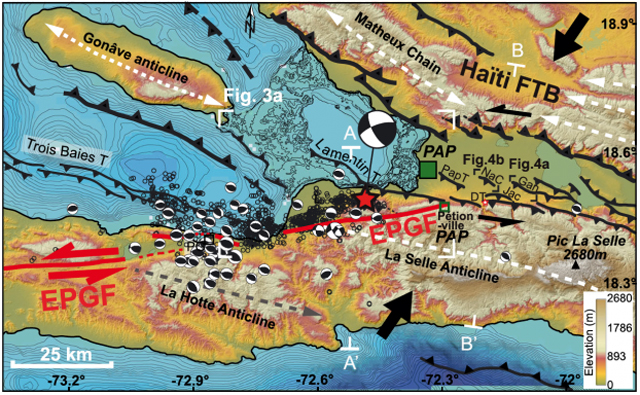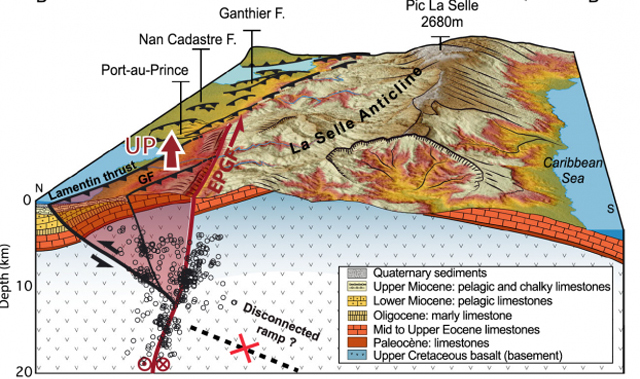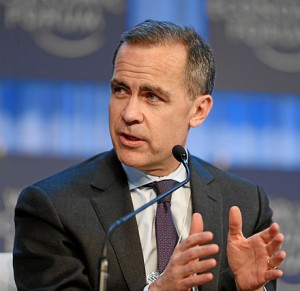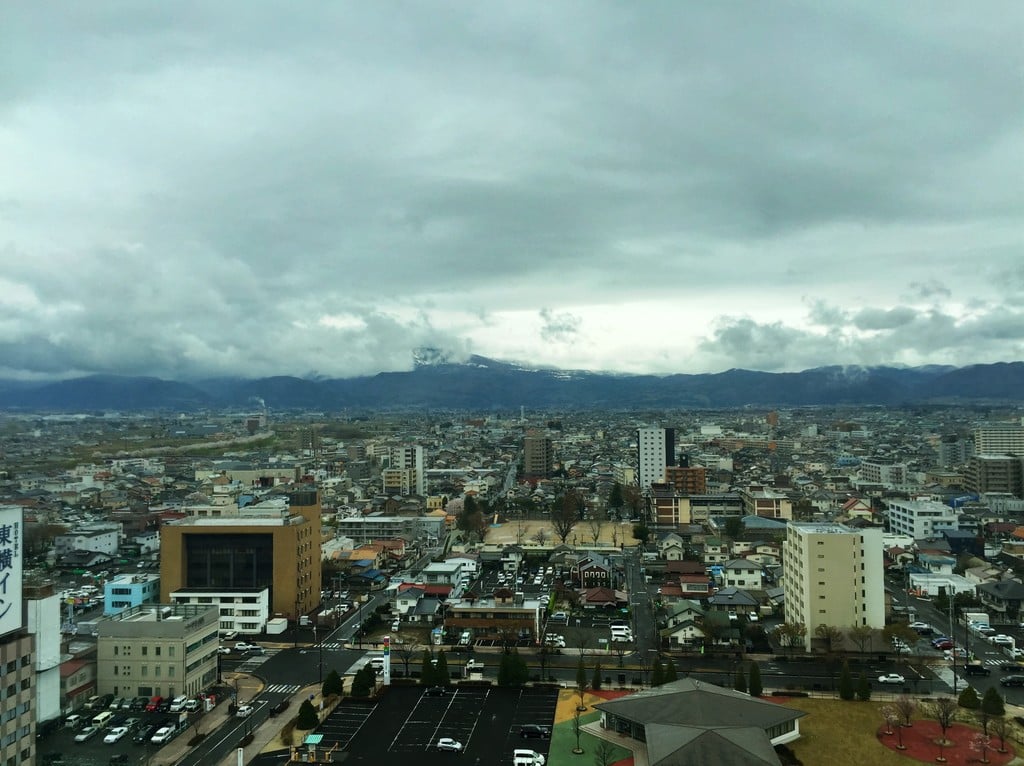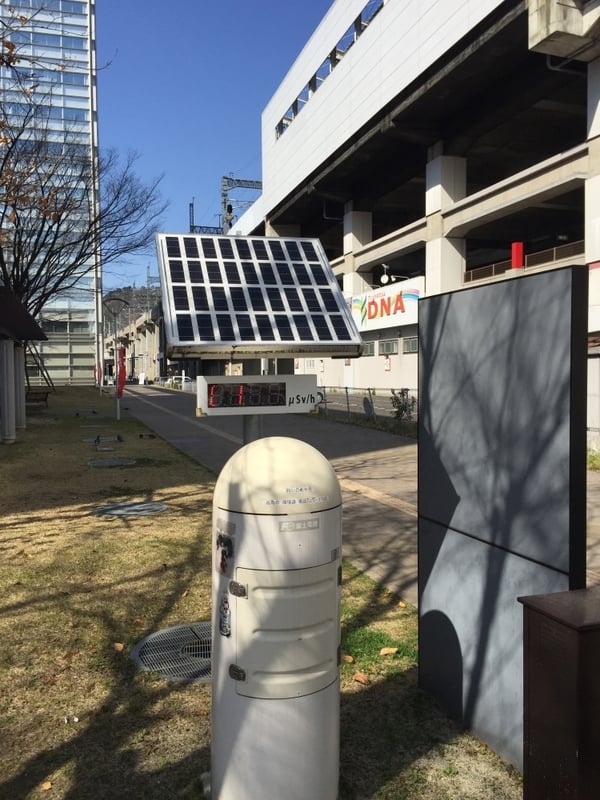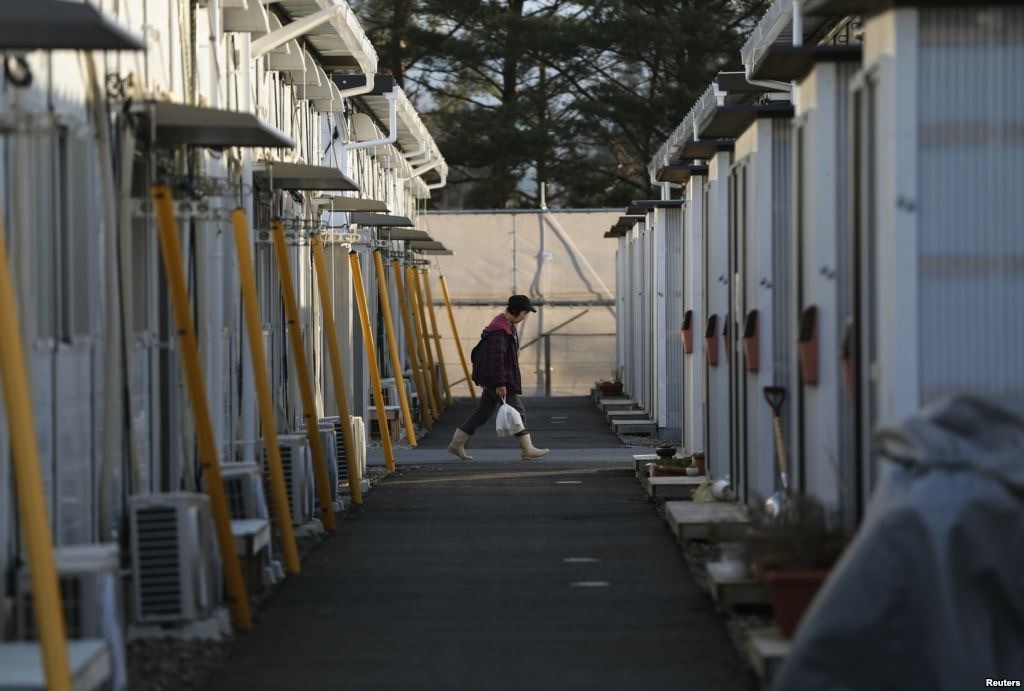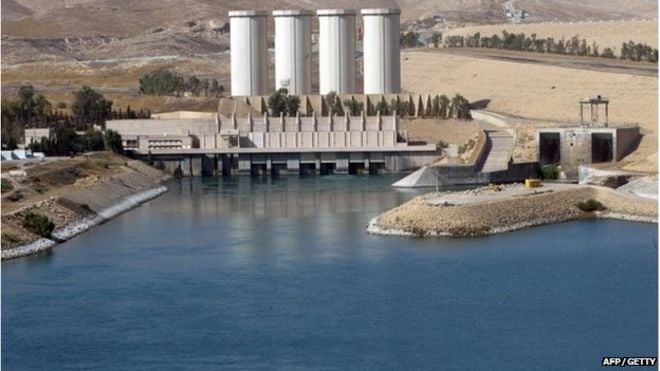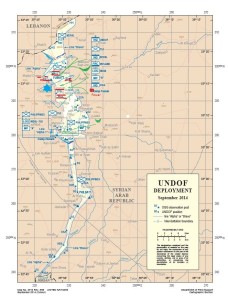The progressive cycle emerged from popular rebellions that altered power relations in South America. There were social improvements and democratic conquests, and imperialist aggression was curbed. But export-oriented extractivism increased and trade became more balkanized. The agreements with China made by each country reveal fractures in continental integration that have facilitated the reappearance of free trade treaties. Progressivism has suffered from unsuccessful neo-developmentalist attempts that failed to channel agro-export rents into productive activities. Social spending helped to ease protest but discontent has expanded under the centre-left governments.
The Right has won the Presidency in Argentina because of the inconsistencies of Kirchnerism, has been strengthened in Brazil by the conservative mutation of the Workers’ Party (PT), and is gaining new life in Ecuador owing to the deceitfulness of the official discourse. The conservatives conceal the corruption, drug trafficking and inequality that continue to be associated with their governments.
Venezuela is battling the U.S. attempt to regain control of its oil. A Chavista counter-attack requires communal power if it is to eradicate the foreign exchange fraud that enriches the bureaucracy. The Bolivarian process will be radicalized or it will regress. Characterizations of the progressive cycle as a post-liberal period omit the continuities with the previous phase and ignore the conflicts with the popular movement. But the pre-eminence of extractivism does not make all governments the same or convert the centre-left administrations into repressive regimes. Socialist projects offer the best outcome in the current stage.
The year 2015 ended with significant advances of the Right in South America. Mauricio Macri was elected President in Argentina, the opposition gained a majority in the Venezuelan parliament, and Dilma Rousseff is being hounded relentlessly in Brazil. Then there are the conservatives’ campaigns in Ecuador, and it remains to be seen whether Evo Morales will obtain a new mandate in Bolivia.[1]
What is the nature of the period in the region? Has the period of governments taking their distance from neoliberalism come to an end? The answer requires that we describe the particular features of the last decade.
Causes and Effects
The progressive cycle arose in popular rebellions that brought down neoliberal governments (Venezuela, Bolivia, Ecuador, Argentina) or eroded their continuity (Brazil, Uruguay). These uprisings modified the power relations but did not alter South America’s economic insertion in the international division of labour. On the contrary, in a decade of rising prices for raw materials all countries reinforced their status as exporters of primary products.
The right-wing governments (Sebastián Piñera in Chile, Álvaro Uribe-Juan Manuel Santos in Colombia, Vicente Fox-Enrique Peña Nieto in Mexico) used the foreign exchange bonanza to consolidate the model based on openness to free trade and privatizations. The centre-left administrations (Néstor and Cristina Kirchner in Argentina, Inácio Lula da Silva-Dilma Rousseff in Brazil, Tabaré Vázquez-José “Pepe” Mujica in Uruguay, Rafael Correa in Ecuador) promoted increased internal consumption, subsidies to local business owners and social welfare programs. The radical presidents (Hugo Chávez-Nicolás Maduro in Venezuela, Evo Morales in Bolivia) applied models of improved redistribution of income and contended with sharp conflicts with the ruling classes.
The affluence of dollars, the fear of new uprisings and the impact of expansive policies in the region avoided the severe neoliberal adjustments that prevailed in other regions. The classic abuses suffered in the New World were transferred to the Old Continent, Europe. Greece’s surgery has had no parallel in Latin America nor have we suffered the financial agonies visited on Portugal, Iceland or Ireland.
This relief was also an effect of the defeat of the FTAA. The project to create a continental free trade area was suspended and this paved the way for a productive respite and social improvements.[2]
During the decade there was a serious limitation of U.S. interventionism. The Marines and the Fourth Fleet continued to operate but did not carry out the invasions typical of Washington. This restraint was confirmed in the decline of the OAS. That Ministry of Colonies lost influence while new organizations (UNASUR, CELAC) intervened in the major conflicts (as in Colombia).
U.S. recognition of Cuba reflected this new scenario. For 53 years the United States had been unable to vanquish the island. It now opted for negotiations and diplomacy, hoping to restore its image and regain hegemony in the region.
This cautious approach of the State Department contrasts with its virulence in other parts of the world. To note the difference, it is enough to observe the sequence of massacres suffered by the Arab world, where the Pentagon ensures U.S. control of oil, destroying states and upholding governments that crush the democratic springs. This demolition (or the wars of plunder in Africa) were absent in South America.
The progressive cycle allowed democratic conquests and constitutional reforms (Bolivia, Venezuela, Ecuador) introducing rights that had been denied for decades by the ruling elites. And greater tolerance was displayed toward social protest. In this respect, the contrast with the more repressive regimes (Colombia, Peru) or with governments that have used the war on drugs to terrorize people (Mexico) is quite striking.
The progressive period also included the recovery of anti-imperialist ideological traditions. This reappropriation was visible in the commemorations of the independence bicentennials, now updated as the agenda of a Second Independence. In a number of countries this atmosphere contributed to the reappearance of the socialist horizon.
The progressive cycle involved transformations that drew international appreciation from the social movements. South America became a reference for popular agendas. But now the limits of the changes occurring during this stage have surfaced.
Frustrations with Integration
During 2015 Latin American exports declined for the third consecutive year. China’s slower growth, the lesser demand for agrofuels, and the return of speculation in financial assets tend to downgrade the market value of raw materials.
The fall in prices will be reinforced if shale co-exists with traditional oil and other substitute sources are developed for basic resources. This is not the first time that capitalism has developed new techniques to counteract the rise in prices of raw materials. These tendencies tend to seriously undermine all of the Latin American economies tied to agro-mineral exports.
The difficulties in the new situation are confirmed in the reduced growth. Since the public debt is lower than in the past the traditional collapses are not yet cause for concern. But fiscal resources are now declining and the margin for developing policies to reactivate the economy is narrowing.
The progressive cycle has not managed to alter regional vulnerability. This fragility persists in the expansion of raw materials deals to the detriment of integration and productive diversification. The South American association projects have been overcome again through national export activities that promote commercial balkanization and the deterioration of manufacturing processes.
After the defeat of the FTAA many initiatives were taken to forge common structures throughout the area. These included shared industrialization goals, energy loops and communications networks. But those programs have languished year after year.
The regional bank, reserve fund and coordinated currency exchange system have never materialized. Norms to minimize the use of the dollar in commercial transactions as well as priority regional infrastructure projects have remained on the drawing boards.
No concerted protection against the fall in export prices has been set in motion. Each government has opted to negotiate with its own customers, shelving plans to create a regional bloc.
This impotence is synthesized by the freezing of the Bank of the South. It was obstructed in particular by Brazil, which promotes instead its BNDES[3] and even a BRICS bank. The absence of any common financial institution has undermined the programs for exchange convergence and a common currency.
The negotiations with China reveal the same regional fracture. Each government unilaterally signs agreements with the new Asian power which monopolizes purchases of raw materials, sales of manufactured goods, and the granting of credit.
China prioritizes dealings in commodities and is grudging in transferring technology. The asymmetry that it has established with the region is surpassed only by the subordination it imposes in Africa.
The consequences of this inequality began to be noted last year, when China reduced its growth and its acquisitions in Latin America. Furthermore, it began to devalue the yuan in order to increase its exports and adapt its exchange parity to the exigencies of a global currency. Those measures accentuated its position as the source of cheap merchandise in South America.
Up to now China has been expanding without exhibiting geopolitical or military ambitions. Some analysts identify this conduct with friendly policies toward the region. Others see in it a neocolonial strategy of appropriation of natural resources. In any case the result has been a geometric increase in South American dependency on raw materials exports.
Instead of establishing intelligent links with the Asian giant as a counter to U.S. domination, the progressive governments have opted for indebtedness and trade restriction. In UNASUR or CELAC there has never been any discussion on how to negotiate with China as a bloc in order to sign more equitable agreements.
The failures in integration explain the new impetus that has been given to the Trans-Pacific Treaty. The FTAs reappear with an intensity rivalled only by the decline in South American cohesiveness. The United States has objectives that are clearer than they were at the time of the FTAA. It promotes an agreement with Asia (TPP) and another with Europe (TTIP)[4] in order to secure its pre-eminence in strategic activities (research labs, computing, medicine, the military). In the wake of the 2008 collapse it has been promoting free trade with renewed intensity.
South America is a market that is coveted by all transnational enterprises. These companies want treaties with greater labour flexibility and explicit advantages in litigating lawsuits over environmental pollution. The United States and China rival each other in their use of those tools to ease trade restrictions.
Chile, Peru and Colombia have already signed on to the free-trade requirements of the TPP in matters of intellectual property, patents and public procurement. They simply want to obtain better markets for their agro-mineral exports. But the big novelty is the readiness of the new Argentine government to participate in this type of negotiations.
Macri claims he will loosen up the agreement with the European Union and induce Brazil to participate in some way in the Pacific Alliance. He has noted that Dilma’s cabinet includes agribusiness representatives more responsive to trade liberalization than they are to the industrialism of MERCOSUR.
The FTAs will be put to the test in the bargaining over another deal being negotiated in secret by 50 countries, which contains far-reaching provisions for liberalization of services (the TISA, or Trade in Services Agreement). This initiative has already been rejected in Uruguay, but there are continuing attempts. The progressive cycle is directly threatened by the avalanche of free trade sponsored by the Empire.
Failures in Neo-Developmentalism
The limits of progressivism have been most visible in the national attempts to implement neo-developmentalist policies. Those efforts were aimed at turning again to industrialization using strategies based on greater state intervention, imitating the development of South-East Asia. Unlike the classic developmentalism they have promoted alliances with agribusiness and look to a long period in which to reverse the deterioration in the terms of trade.
After a decade, they have not managed to achieve any of the industrialization goals. The expectation of equalling the Asian advance has dissolved in the face of the higher profits generated by exploitation of workers in the Far East. The hope of entrepreneurship by local business people has faded as they continue to require state assistance. The promotion of an efficient civil service has been neutralized by the re-creation of inept bureaucracies.
The major neo-developmentalist attempt was carried out in Argentina during the decade that followed the social explosion of 2001. That experiment was eroded by many imbalances. Attempts to administer the agrarian surplus in a productive way through state management of foreign trade were abandoned. Instead, trust was placed in business owners who used the subsidies for capital flight rather than meaningful investment. Furthermore, they hoped for a virtuous circle of demand based on contributions of the capitalists, but the latter preferred to mark up prices.
The model preserved all of the structural imbalances of the Argentine economy. It heightened dependency on raw materials, fostered stagnation in energy supply, perpetuated a concentrated industrial structure and sustained a financial system that was hostile to investment. The maintenance of a regressive tax system stood in the way of modifying the pillars of social inequality.
The accumulated tensions led to a regressive turn that the Kirchnerist candidate (Daniel Scioli) eluded by losing the election. He proposed a gradual adjustment program through taking on new debt, devaluating the currency, reaching a settlement with the vulture funds claimants, and imposing higher fees and cutbacks in social spending.
In Brazil the debate has been over whether the PT government is managing a conservative variant of neo-developmentalism or a regulated version of neoliberalism. As it did not have to contend with the crisis and popular rebellion that convulsed Argentina, the changes in economic policy were more limited.
But at the end of a decade the results are similar in both countries. The Brazilian economy has stagnated and the expansion in consumption has not reduced social inequality or increased the size of the middle class. There is greater dependency on commodity exports and a major downturn in industry. Finance capital retains its privileges and agribusiness stifles any hope of agrarian reform.
Dilma introduced the conservative turn that progressivism avoided in Argentina. She won the election disputing the adjustment advocated by her rival (Aecio Neves) and then disowned those promises under pressure of the markets. She appointed an ultra-liberal Finance minister (Joaquim Levy[5]), a replay of the first Lula presidency that began with personalities of the same type (Antonio Palocci[6]).
During 2015 this orthodox management generated increased rates and fees. Dilma justified the cutback in social policies and maintained the advantages enjoyed by financiers as they build their fortunes. But as the new year opened she replaced the bankers’ man with a more heterodox economist (Nelson Barbosa) who promises a slower fiscal adjustment to cushion the recession. This turn does not portend an exit from the mess created by the conservative policies.
Ecuador has experienced the same regression from neo-developmentalism. Correa began with a reorganization of the state that strengthened the internal market. He increased tax revenues, provided improved social programs, and channelled part of the rent into public investment.
But later he faced all the limits of analogous experiments and opted for increased debt and export promotion. He signed a FTA with Europe, facilitated privatization of highways, and awarded fully developed oil reserves to the major companies.
The failings of neo-developmentalism have blocked the progressive cycle. That model attempted to channel export surpluses into productive activities. But it encountered resistance from the economic power and gave in to those pressures.
A New Type of Protests
During the last decade explosions of popular discontent have become more infrequent. All of the governments count on using increased fiscal revenues as a significant buffer in the face of social demands. The Right resorted to welfarism, the Centre-Left improved existing programs without affecting powerful interests, and the radical processes facilitated conquests of greater importance.
Throughout the region there was a relaxation in social tensions and the major conflicts were expressed in the political sphere, as in the big resistance mounted against rightist attempts to remove Left governments and the huge mobilizations backing candidates in election battles. But there were no uprisings equivalent to those in the preceding period. Only the heroic response to the coup in Honduras came close.
The fighting spirit of the masses was expressed in other fields, as in the mass demonstrations of Chilean students for free education, the outstanding general strike in Paraguay, or the energetic demands of the peasants, indigenous and environmentalists in Colombia and Peru.
But the principal novelty in this period was the social protests in the countries governed by the Centre-Left. In a context of strong political pressures from the Right, this outburst from below highlighted popular dissatisfaction.
The defiance was quite striking in Argentina. First there was the extended wave of strikes by teachers and public sector workers, followed by the refusal to pay a tax imposed on higher-income wage-earners. This discontent set off four general strikes in 2014-2015. The size of these actions surprised the leaders of the official trade unions, who opposed the protest.
In Brazil, the discontent emerged in the July days of 2013. The huge demonstrations demanding improvements in public transportation and education convulsed the major cities. These were not just “second generation” claims over and above what was already achieved; they expressed a frustration with the conditions of life. This discontent was manifested in the questioning of the superfluous expenditures associated with the financing of the World Cup that could have gone instead toward investment in education.
Finally, in Ecuador the social and indigenous mobilizations became more frequent in the streets and in the past year reached a peak in terms of numbers involved. Correa responded in a harsh and authoritarian manner, widening the rift separating the government from broad sectors of the masses.
Why is the Right Advancing?
Macri’s arrival in the presidency represents the first electoral overturn of a Centre-Left administration by its conservative opponents. This turn is not comparable to what occurred in Chile with Piñera’s victory over Michelle Bachelet. That was a substitution of government within the limits of the same neoliberal rules.
Macri is a crude exponent of the Right. He resorted to demagogy, depoliticization and illusions of concord. With vacuous promises he transformed the powerful cacerolazos [pot-banging street protests by predominantly middle-class sectors] into a surge of votes.
The new President has appointed a cabinet of managers to administer the state as if it was a business. He has initiated a drastic and regressive transfer of incomes through devaluation and increased prices. He is issuing decrees criminalizing social protest and is preparing to repeal recently won democratic rights.
Macri’s triumph was no accident. It was preceded by the Kirchner government’s refusal to accept many demands from below that the Right took up in a distorted and demagogic way. The Kirchner followers fail to acknowledge their responsibility.
Some progressives see the victory of the PRO, Macri’s party, as a transient misfortune and hope to retake the government in a few years. They do not understand the modifications in the political map that are probable in the interval. Others argue that the election was lost through bad luck or because of an erosion in support over 12 years, as if that weariness adhered to some fixed chronology.
Those who attribute the election outcome to the harangue – effective, no doubt – of the hegemonic news media do not accept that the alternative mounted by the official propaganda failed as well. This applies as well to those who banter about Macri’s “post-politics” discourse without noting the declining credibility of the Kirchner discourse. Macri’s victory is ascribable to the frustration with corruption, clientelism, and the Peronist culture of top-down control and loyalty.
The reactionary offensive in pursuit of Dilma has not achieved the results it did in Argentina, but it did disrupt the Brazilian government throughout 2015. The Rightists began with big demonstrations in March that they were unable to sustain in August, and even less in December. The social mobilizations against the institutional coup followed instead an opposite course and grew as time went by.
The Supreme Court has blocked the political trial for now, and the government has gained a respite that it is using to reorganize alliances in exchange for a certain fiscal relief. But Dilma has only achieved a truce with her opponents in the Congress and the media.
As in Argentina, the progressive forces evade any explanation of this retreat. They simply manoeuvre to secure the government’s survival through new agreements with the business lobby, the provincial elites and the partidocracia, the bureaucratic party structures.
They don’t bother to investigate the regression of the PT, which has eroded its social base by agreeing to the adjustments. In the last election Dilma won by a slim margin, compensating her losses in the south with votes in the northeast. Support from the old working-class base of the PT has declined and been supplanted by traditional clientelism.
Furthermore, the government is tarnished by serious corruption scandals. Shady deals with the industrial elite have come to light that portray the consequences of governing in alliances with the affluent. Instead of analyzing this tragic mutation, the theorists of progressivism repeat their timeless messages in opposition to conservative restoration.
A similar regression is observed in Ecuador. Correa’s management is marked by a big divorce between his belligerent rhetoric and his status quo administration. The President polemicizes against Rightists and is implacable in his denunciations of imperialist interference. But day by day he crosses a new barrier in his acceptance of free trade and his confrontation with the social movements.
Here too the analyses of progressivism are limited to redoubled warnings against the Right. They overlook the disillusionment created by a president who is compromised with the establishment agenda. This turn explains Correa’s recent decision not to seek a new mandate.
The Centrality of Venezuela
The outcome of the progressive cycle is at stake in Venezuela. What is happening there is not equivalent to what is going on in other countries. These differences are not appreciated by those who compare the recent triumphs of the Right in Venezuela and Argentina. The two situations are not comparable.
In Venezuela the election unfolded amidst an economic war, with shortages, hyperinflation, and smuggling of subsidized commodities. It was a campaign full of bullets, paramilitaries, conspiratorial NGOs, and criminal provocations.
The Right prepared its usual denunciations of fraud in order to discredit an adverse election result. But it won, and was then unable to explain how it could achieve this victory under a “dictatorship.” For the first time in 16 years it obtained a majority in the parliament and will now try to call a vote to revoke Maduro’s mandate.
Since they are unwilling to wait until 2018, when his term expires, a huge conflict looms with the Executive power. In the National Assembly they will promote unacceptable demands – free the convicted coup plotters, expose speculation, overturn the social conquests – explicitly aimed at harassing the President.
None of these features is present in Argentina. Not only does Capriles have priorities that are quite distinct from Macri’s, but Chavismo differs significantly from Kirchnerism. The first arose out of a popular rebellion and declared its intention to achieve socialist objectives. The latter limited itself to capturing the effects of an uprising and consistently glorified capitalism.
In Venezuela there was a redistribution of the rent, undermining the privileges of the dominant classes. In Argentina this surplus was distributed without significantly altering the advantages enjoyed by the bourgeoisie. The popular empowerment that Chavismo unleashed bears no comparison with the expansion of consumerism promoted by Kirchnerism. And the anti-imperialist project of the ALBA is quite unlike the conservatism of the MERCOSUR (Cieza, 2015; Mazzeo, 2015; Stedile, 2015).
But the principal singularity of Venezuela is derived from the place it occupies in the system of imperialist domination. The United States has targeted this country, hoping to regain control of the largest oil reserves in the continent. It maintains a strategy of permanent aggression.
The war the Pentagon waged in the Middle East – demolishing Iraq and Libya – is sufficient to show the importance it assigns to control of crude oil. The State Department may recognize Cuba and discuss with opposing presidents, but Venezuela is a non-negotiable prey.
That is why the hegemonic news media hammer away day and night against this country, portraying a disaster that must be rescued from afar. The coup plotters are presented as innocent victims of persecution, omitting the fact that Leopoldo López was convicted for the murders that were committed during the guarimbas [violent street protests]. Any U.S. court would have handed down much harsher sentences for such outrages. The media demonization is designed to isolate Chavismo and encourage further condemnation of it by the Social Democracy.
This campaign had been unsuccessful until the recent election victory of the Right. Now they are resolved to dust off the plans to overthrow Maduro, combining the erosion in support promoted by Capriles with the violent removal favoured by López. They are trying to push the government into a chaotic situation in order to stage a repetition of the institutional coup perpetrated against Fernando Lugo in Paraguay.
Macri is the international coordinator of this conspiracy. He heads up all the challenges to Venezuela, while he criminalizes protest in Argentina. He governs his own country by decree but demands respect for parliamentarians in another nation.
Macri has already called for sanctions against Venezuela, a new partner in MERCOSUR, but he does not talk about Guantánamo or mention the ordeals of the political prisoners in U.S. penitentiaries. He has postponed his call for sanctions in Venezuela as he waits for Dilma to take a firmer stance. But he will revert to a hard line if he thinks it fits well with the provocations of López.
Unpostponable Decisions
Chavismo has faced major assaults because of the radicalism of its process, the rage of the bourgeoisie, and the U.S. determination to control oil production. The contrast with Bolivia is striking. There too a radical anti-imperialist government prevails. But the Altiplano lacks the strategic relevance of Venezuela and drags with it a much higher level of underdevelopment.
Evo Morales retains political hegemony and has achieved significant economic growth. He has forged a plurinational state, displacing the old racist elites, and asserted for the first time the real authority of this organism throughout the territory.
Up to this point the Right has been unable to mount a successful challenge for government, but a battle has now opened over the issue of Morales’ re-election. In any case, Bolivia does not confront the unpostponable decisions that Chavismo must now make.
Since the fall in the oil price, Venezuela has suffered a drastic cutback in revenues that threatens its access to the imports required for the day-to-day functioning of the economy. Added to this are the huge surge in the fiscal deficit and the failure to control the foreign exchange rate, inflation and the money supply.
It’s not enough to simply note the existence of an economic war. It must also be said that the government has failed to confront these abuses. Maduro has lacked the firmness that Fidel displayed during Cuba’s “special period.” The economic sabotage is effective because the state bureaucracy continues to uphold with PDVSA dollars a foreign exchange system that facilitates the organized embezzlement of public resources (Gómez Freire, 2015; Aharonian, 2016; Colussi, 2015).
This lack of control accentuates the stagnation of the distributionist model that initially channelled the oil rent into social welfare programs but failed subsequently to jumpstart the creation of a productive economy.
The current situation offers a new (and perhaps final) opportunity to reorganize the economy. This unavoidably entails cutting off the use of U.S. dollars for the smuggling of merchandise and entry of overpriced imports. This fraud enriches the bourgeoisified civil service and infuriates the people. It is not enough to reorganize PDVSA, control the borders or jail a few offenders. Unless the corrupt officials are removed altogether, the Bolivarian process will condemn itself to decline.
Chavismo needs to counterattack if it is to regain popular support. Various economists have developed detailed programs to implement an alternative management of the exchange rate, based on nationalization of the banks and foreign trade. Since there are no longer enough dollars to pay for imports and pay the debt, there is a need as well to look into auditing those liabilities.
Maduro has declared he will not surrender. But in the present delicate situation measures from above are not enough. The survival of the Bolivarian process requires building popular power from below. Legislation already exists defining the attributes of communal power. Those institutions [the communal councils and communes] alone can sustain the battle against capitalists who frustrate exchange controls and recapture surplus oil profits.
The exercise of communal power has been impeded for some years by a bureaucracy that is impoverishing the state. That sector would be the first to be adversely affected by a democracy from below. Maduro has now installed a national assembly of communal power. But the verticalist functioning of the PSUV[7] and the hostility toward more radical currents [within Chavismo] impede this initiative (Guerrero, 2015; Iturriza, 2015; Szalkowicz, 2015; Teruggi, 2015).
Any boost given to communal organization will bring redoubled denunciations in the international media about the “violation of democracy” in Venezuela. That kind of propaganda will be spread by the likes of those who were behind the U.S. coup in Honduras or the institutional farce that overthrew Lugo in Paraguay.
These same personalities say nothing about the state terrorism that is rampant in Mexico or Colombia. They had to put up with Cuba’s membership in the OAS and CELAC, but they are not prepared to tolerate Venezuela’s challenge. Confronting that media establishment is a priority in the continent as a whole.
What the Rightists Conceal
The new situation in South America has emboldened the Right. It thinks its time has come and it promises to end the “populist” cycle and replace “interventionism” with “the market” and “authoritarianism” with “freedom.”
What these messages conceal is the Right’s direct responsibility in the devastation suffered during the 1980s and ‘90s. The progressive governments the Right is challenging came into being because of the economic collapse and the social blood-letting produced by the neoliberals. The Right not only portrays that past as a process unrelated to their regimes, it covers up what actually happened in the countries it governs.
It would seem that the only problems in Latin America are located outside of that radius. This deception has been constructed by the hegemonic news media, which overlook any information considered adverse to right-wing administrations.
The cover-up is shameless and most people are kept in ignorance of any news related to those countries targeted by the dominant press. The media describe the inflation and the currency tensions existing under these governments, but do not mention the unemployment and lack of job security prevalent in the neoliberal economies.
They also highlight the “loss of opportunities” caused by capital controls while remaining silent about the upheavals produced by deregulation. They rant against “mindless consumerism” but hide the damage caused by inequality.
But the grossest omission concerns the functioning of the state. The Right objects to the “discretionary paternalism” practiced by the progressive regimes but ignores the social collapse in the narco-states that has occurred in conjunction with free trade and financial deregulation. Three economies known for their openness and attractiveness to capital – Mexico, Colombia and Peru – are now suffering this corrosion of the state.
Mexico has the highest level of violence in the region. No high-ranking official has been jailed and many territories are controlled by criminal gangs. In Colombia the drug cartels finance presidents, parties and sections of the army. In Peru official complicity with drug trafficking has gone to the point that sentences have been commuted for 3,200 people convicted of that offence.
None of this information is reported with the persistence given to the reports of Venezuela’s misadventures. This duality in reporting extends to matters of corruption. The Right presents it as a gangrene typical of progressivism, overlooking the protagonistic participation of the capitalists in the major incidents of embezzlement in all countries.
The major media expose the dark details of the official handling of public money in Venezuela, Brazil or Bolivia. But they do not mention the more scandalous cases involving their protégés. The collective outrage that precipitated the recent resignation of Guatemala’s president did not make the headlines.
The Right resorts to the same media one-sidedness in embellishing Chile’s economic model, which is praised for its privatizations, with no mention of the stifling household debt, job insecurity, and miserable private retirement pensions, or the slowing growth and rising corruption that are jeopardizing the education reforms and social security promised by Bachelet.
The contrast between the neoliberal paradise and the progressive hell also entails silence about the only case of default in 2015. Puerto Rico ran out of money to finance the plunder of its human resources (emigration), natural resources (replacement of local agriculture by imported food), and economic resources (relocation of industry and tourism).
There is no space for the consequences of neoliberalism in the newspapers or news bulletins. The Right discusses the end of the progressive cycle while failing to mention what is happening outside of that universe.
A Post-Liberal Period?
The Right’s misleading view of the progressive cycle contrasts with the important debate now unfolding among Left theorists as to whether this cycle is continuing or is exhausted.
Those who support the continuity thesis point to the solidity of the transformations of the last decade. They emphasize the socio-economic accomplishments, the advances in continental integration, the geopolitical successes and the election victories (Arkonada, 2015a; Sader, 2015a).
The consistency that they see in the changes carried out is established through the use of the adjective “post-liberal” to describe this cycle. They hold that a “post” stage has left the preceding phase behind through the thoroughgoing nature of the changes registered. This is their focus in polemics against those who emphasize the decline in that process (Itzamná, 2015; Sader, 2016b; Rauber, 2015).
The triumph of Macri, the advance of Capriles-López, and the paralysis of Dilma or Correa have moderated these assessments and induced certain criticisms. Some cite the harmful effects of bureaucracy or shortcomings in the cultural battle (Arana, 2015; Arkonada, 2015b).
But in general they maintain their characterization of the period and emphasize the limitations of the conservative offensive. They highlight the weakness of that project, the transitory nature of its successes or the proximity of major social resistance (Puga Álvarez, 2015; Arkonada, 2015b).
This view fails to register the degree to which the deepening of the extractivist pattern has undermined the progressive cycle. The link between this economic pattern and right-wing governments is not extended to include its peers on the Centre-Left. These governments are adversely affected by the consequences of a model that reduces employment and inhibits productive development. This contradiction is much more serious in the radical processes.
The assumption of a post-liberal period omits those tensions. Not only does it forget that overcoming neoliberalism means beginning to reverse the region’s dependency on raw materials exports, it entails a serious lack of clarity in the characterization of the period. It is never explained whether post-liberalism is referring to the governments or to the patterns of accumulation.
It is sometimes suggested that what is involved is a period counterposed to the Washington Consensus. But in that case it is the political turn to autonomy that is emphasized, while ignoring the persistence of the pattern of raw materials exports.
Or it is argued that a more substantial change in the economic model would go beyond what it is possible to do in Latin America. Such a turn would involve more significant changes in the direction of a multipolar capitalist world that is said to be developing. However, no one explains how those transformations would alter the traditional physiognomy of the region. What occurred in the last decade illustrates a course of raw materials development counterposed to the steps that would have to be taken in the region to forge an industrialized, diversified and integrated economy.
Those sympathetic to progressivism defend the neo-developmentalist economic base of the last decade, noting its contrast with neoliberalism. But they do not register the many areas of complementarity between the two models. Nor do they note that no attempt at greater state regulation has reversed the privatizations, eradicated job insecurity or modified the payments on the debt.[8]
These insufficiencies do not constitute the “price to pay” for the development of a post-liberal scenario. They perpetuate dependency and primary export specialization.
In the last decade, of course, there have been social improvements, greater consumption and some growth. But that kind of recovery has occurred in other cycles of business recovery and higher export prices. What has not changed is the profile of regional capitalism and its adaptation to the current requirements of globalization.
When this fact is ignored there is a tendency to see advances where there is stagnation and enduring achievements where mistakes are prevalent. The backdrop to the problem is the sanctification of capitalism as the only feasible system. The theorists of progressivism rule out the implementation of socialist programs or at best concede their possibility in a distant future.
With that premise, they imagine the viability of heterodox, inclusive or productive schemas of a Latin American capitalism. Each proof of failure of this model is replaced by another hope of the same type, which ends in similar disappointments.
Unthinking Oficialismo
The real problems afflicting progressivism are frequently eluded, and criticism is focused exclusively on the bureaucracy, corruption, or inefficiency. It is forgotten that those problems can occur at any time in all economic models and do not constitute a peculiar feature of the last decade.
And since it is supposed that the sole alternative to those governments is a conservative return, conduct is justified that ends up facilitating the right-wing restoration.
This conduct has been exposed during the protests that have erupted under the centre-left governments. Their supporters respond with the allegation that the right wing is behind the protests. They question the “ungrateful ones” who have taken to the streets but ignore the mistakes made by the progressive governments.
During the Argentine strikes in 2014 and 2015, progressivism repeated the traditional establishment arguments. It decried the “political” nature of the strikes, as if that reduced their legitimacy. It attacked the “extortion by the picketers,” overlooking the fact that it is the bosses, not the activists, who engage in blackmail, and that gestures like these roadblocks are tactics used by workers in the informal sector, lacking the right to protest, in order to protect themselves.
Other progressives try to discredit the strikes, saying that “tomorrow everything will remain the same,” as if an act of force by the workers will not improve their bargaining power. And they present the strike as an act of “egotism” by the better-off workers, even though that advantage has helped to generate some of the biggest social acts of resistence in Argentine history.
In Brazil, the reaction of the PT was similar. It did not participate when the protests began in 2013. It expressed a lack of trust toward the demonstrators and only conceded the validity of the marches when they became a mass movement. The government limited itself to accusing the Right of encouraging discontent instead of noting the popular disillusionment with an administration that appoints neoliberal ministers.
This hostility toward the actions in the streets was a result of the PT’s regression. The party has lost its sensitivity to popular demands as a result of its close links with the business interests and bankers. Its leadership manages the economy in the interests of the capitalists and is surprised when its social base asks for what it has always demanded.
The same tensions emerged in Ecuador in the face of numerous petitions by the social movements in defense of the land and water. Since their marches coincided with the Right’s rejection of the government’s moves to tax the highest incomes, government officials pointed to the convergence of both actions as the same process of conservative restoration. Instead of favouring an approach to the social protesters in order to forge a common front in opposition to the reactionaries, progressivism blindly lined up with Correa.
What is happening in the face of the protests in these three countries governed by the Centre-Left illustrates how the progressive administrations distance themselves from the popular movement. That is how they pave the way for a return of the Right.
Enduring distinctions
Objecting to the post-liberal thesis are other authors who identify an exhaustion of the progressive cycle as a consequence of extractivism. In their view, mega-mining undertakings (Tipnis, Famaitina, Yasuni, Aratiri)[9] and the primacy of soy or hydrocarbons development have blocked reduction in social inequality. And they argue that all the governments in Latin America converge in a “commodities consensus” that accentuates dependency on raw materials production and export (Svampa, 2014; Zibechi, 2016, Zibechi, 2015a).
This is a correct description of the consequences of a model that privileges raw materials exports. But it is wrong in postulating the pre-eminence of a uniform physiognomy in the region. It fails to note the significant differences that separate the right-wing, centre-left and radical governments in all respects other than extractivism.
Venezuela has not eradicated its dependence on oil, Bolivia has not liberated itself from the centrality of gas production, and Cuba maintains its reliance on nickel production or tourism. But this dependency does not convert Maduro, Evo or Raúl Castro into leaders similar to Peña Nieto, Santos or Piñera. Raw materials exports prevail throughout the Latin American economy without defining the profile of the governments.
By highlighting the damaging effects of extractivism, the critics avoid the naive post-liberal perspective. But the limitations of progressivism cannot be reduced to the reinforcement of the agro-mining pattern, nor can neo-developmentalism be defined by this feature. If extractivism were to constitute the principal feature of that model, it would have no significant differences with neoliberalism.
The new developmentalists have tried to channel the agro-mining rents toward the internal market and industrial recomposition. They have failed in that objective, but they had a goal that is absent in their free-trade adversaries.
It is important to explain these distinctions if we are to develop alternatives. The answers do not emerge from a contrast with extractivism alone. Against the post-liberal capitalism promoted by the theorists of the continuity of the progressive cycle, these critics do not advance the socialist option. Instead, they issue generic calls for projects centred on increasing the number of self-managed communities.
This localist horizon tends to obviate the need for a state administered by the popular majorities, and which harmonizes protection of the environment with industrial development. Latin America needs to nationalize the mainsprings of its economy if it is to finance productive undertakings using the rent from agricultural production and mining.
The beneficiaries would then be the labouring majorities and not the capitalist minorities. There lies the main difference between socialism and neo-developmentalism.
The theoreticians of the decline of progressivism question the authoritarianism of the neo-developmentalist governments. They point to restrictions on public freedoms, assaults on the indigenous movement and the trend toward centralizing powers in the hands of presidents. And they denounce the substitution of dynamics of hegemony by coercive logics and the silencing of voices independent of the official discourse (Svampa, 2015; Gudynas, 2015; Zibechi, 2015b).
But none of these tendencies has converted a centre-left administration into a government of reaction. The only such case might be the President of Peru, Ollanta Humala, who posed as a Chavista but has operated as president with a heavy hand and neocolonial subordination.
It is important to recognize these differences if we are to take our distance from the messages spread by the Right against “authoritarianism” and “populism.” While the conservative politicians seek to amalgate criticism of progressivism in a deceitful common discourse, the Left needs to take its distance. Explicitly repudiating the arguments and posturing of the reactionaries is the best way to avoid that trap.
It is worth remembering that radicalizing the processes that are bogged down by the hesitations of progressivism is a task that is counterposed to the neoliberal regression. Areas of convergence with the Centre-Left can exist, but never with the Right. Confronting the reactionaries is a requisite of mass-based political action.
These distinctions apply in all respects and have particular validity in the exercise of democracy. Progressivism can adopt coercive approaches but repressive patterns are not part of its basic structure. That is why a passage from hegemonic forms of rule (by consensus) to dominant forces (coercion) in the administration of the state is usually accompanied by changes in the type of government. The differences between the Centre-Left and the Right that appeared at the outset of the progressive cycle persist today.
Concrete Controversies
All of these current debates now take on an urgent content in Venezuela. In that country the discussion is not about generic diagnoses of continuity or exhaustion of a stage but of specific proposals over radicalization or regression of the Bolivarian process.
The revolutionists advocate radicalization. They reject agreements with the bourgeoisie, promote effective actions against speculators and favour consolidation of the communal power. These initiatives reflect the audacity that characterized the successful revolutions of the 20th century. They call for going on the offensive before the Right comes out on top. (Conde, 2015; Valderrama, Aponte, 2015; Aznárez, 2015; Carcione, 2015).
The second approach is advocated by the Social Democrats and officials who are feathering their nests with the status quo. Their theorists do not advance a clear program. Nor do they openly dispute the radical theses. They simply emphasize the objectives, suggesting that the government will know how to find the correct road.
They tend to lay the blame on imperialism for all the difficulties Venezuela is experiencing, but they contribute no ideas on how to defeat those attacks. They call for renewed efforts to fight “inefficiency” or “lack of control” but do not mention nationalization of the banks, the expropriation of those engaged in capital flight, or an audit of the debt.
Merely defending the Bolivarian process (and the following it maintains) will not solve any problems in the present dilemma. Without an open discussion of why Chavismo lost votes among its supporters, there is no way to overcome the bigger predicament posed by the Right. Nor is there any point in elliptically noting that the government “did not or could not” adopt the appropriate policies.
It is even more unwise to blame the people for “forgetting” what Chavismo brought to them. This line of reasoning assumes that improvements paternally granted by a government should be applauded without hesitation. It is the polar opposite of communal power and the protagonism of workers who are building their own future.
The projects of post-liberal capitalism collide with the reality of Venezuela. This proves the fanciful nature of that model and the need to open anticapitalist routes in order to head off the conservative restoration. Rejecting that approach with a recipe book of impossibilities simply amounts to crossing one’s arms in futility.
Some thinkers agree with this characterization, but they think “the time has passed” to advance in that direction. But how is this timing determined? What is the barometer that can establish the end of a transformative process?
The loss of enthusiasm, the retreat to private life, and proclamations of “good-bye to Chavismo” are current today. But the people often react to situations of extreme adversity. It would not be the first time that divisions and errors of the Right precipitated a Bolivarian counter-attack.
Socialist Identity
The persistence, renewal or extinction of the progressive cycle in the region depends on the popular resistance. Without this dimension it is impossible to ascertain whether it is the continuation or the close of that period. It is a huge error to assess changes in governments without reference to the levels of struggle, organization or consciousness of the oppressed.
The Right has the initiative for now, but the nature of the period as a whole will be defined in the social battles that the conservatives themselves will surely precipitate. And the outcome of those conflicts does not depend solely on the preparedness to struggle. A key factor will be the influence of socialist, anti-imperialist and revolutionary currents.
In the last decade the traditions of these currents have been brought up to date through social movements and radical political processes. In particular, a new generation of militants has renewed with the legacy of the Cuban revolution and Latin American Marxism.
Chávez played a key role in this recovery, and his death severely affected the renaissance of socialist ideology. The impact was so great that it inspired a search for substitute references. An example is the centrality assigned to Pope Francis, which tends to confuse roles of mediation with roles of leadership.
Some personalities are of course useful for negotiating with enemies. The first Latin American to accede to the Papacy has a strong record as an intermediary with imperialism. His presence can serve to break the economic blockade of Cuba, oppose the sabotage of the peace negotiations in Colombia, or intercede against the criminal gangs operating in the region. It would be foolish to squander Francis’s usefulness as a bridge in any of those negotiations.
However, that function does not mean the Pope is a protagonist in the battles against neoliberal capitalism. Many people assume that Francis leads that confrontation thanks to his messages in opposition to inequality, financial speculation or environmental devastation.
They fail to note that these proclamations stand in contradiction to the ongoing lavishness of the Vatican and its financing through obscure banking operations. The divorce between sermon and reality has been a classic feature of ecclesiastical history.
The Pope also adopts various precepts of the social doctrine of the Church that promote models of capitalism with greater state intervention. Those schemes are designed to regulate markets, raise compassion among the wealthy and guarantee the submission of the dispossessed. They expand on an ideology forged during the 20th century in polemics with Marxism and its influential ideas of emancipation.
The Church’s conceptions have not changed. Francis is attempting to resurrect them in order to overcome the loss of members that Catholicism has experienced at the hands of rival creeds. The latter have modernized, are more accessible to the popular classes and are less identified with the interests of the ruling elites.
The Vatican’s campaign counts on the approval of the news media, which exalt the image of Francis, overlooking his questionable past under the Argentine dictatorship. Bergoglio maintains his old hostility to Liberation Theology, rejects sexual diversity, denies the rights of women and avoids the penalization of pedophiles. And he covers for bishops challenged by their communities (Chile), canonizes missionaries who enslaved indigenous peoples (California), and facilitates assaults on secularism.
It is an error to assume that the Latin American Left will be built in an environment shared with Francis. Not only is there a lasting and huge counterposition of ideas and objectives. While the Vatican continues to recruit believers in order to deter the struggle, the Left is organizing protagonists of the resistance.
It is as important to reinforce this combative attitude as it is to strengthen the political identity of the socialists. The Left of the 21st century is defined by its anticapitalist profile. Fighting for the communist ideals of equality, democracy and justice is the best way to contribute to a positive outcome of the progressive cycle.
Notes:
- A referendum will be held in Bolivia on February 21 to determine whether the country’s Constitution should be amended to allow presidential candidates to stand for more than two terms, thereby allowing President Evo Morales and Vice-President Álvaro García Linera to run for another term in office in 2019.
- The rejection by South American governments of the proposed Free Trade Area of the Americas in 2005, at Hugo Chávez’s instigation, was a turning point in relations between the United States and most Latin American governments.
- BNDES, the National Social and Economic Development Bank.
- Trans-Pacific Partnership (TPP) and Transatlantic Trade and Investment Partnership (TTIP).
- Levy is now the World Bank Chief Financial Officer.
- Palocci was a Finance minister under Lula, later a Chief of Staff in Dilma’s first government.
- PSUV – United Socialist Party of Venezuela, founded by Hugo Chávez.
- This may be overstated somewhat. For example, Bolivia’s MAS government did in fact reverse many of the privatizations of major industries carried out by previous neoliberal regimes. And Correa did repudiate a substantial portion of Ecuador’s debt pursuant to an independent audit of its foreign debt liabilities.
- Tipnis refers to Bolivian government plans to build a highway through a national park of that name; protest marches led to a provisional suspension of the project. Famaitina refers to a Canadian-based company’s plan to develop an open-pit gold mine in the town of the same name in Argentina; after vigorous protests by the community, the project was suspended in 2012. Yasuni refers to Correa’s offer to cancel plans to exploit hydrocarbons in a biologically diverse part of Ecuador’s Amazon if international funding could be found to compensate for the loss of potential state revenues; when such funding failed to materialize, Correa withdrew the offer. Aratirí refers to a proposed open-pit iron ore mine in Uruguay that has been widely protested.
References
- Aharonian, Aram, 2016. Venezuela, ejemplo cívico…, ¿y ahora qué?, 20-1.
- Arana, Silvia, 2015. Respuesta a los profetas del “fin de ciclo” latinoamericano, 1-10.
- Arkonada, Katu, 2015a. Fin del ciclo progresista o reflujo del cambio de época en América Latina, 8-9.
- Arkonada Katu, 2015b. Fin de ciclo? La disputa por el relato, 18-12.
- Aznárez, Carlos, 2015. Venezuela: Aún se está a tiempo de salvar la Revolución, 7-12.
- Carcione, Carlos, 2015. Una mirada desde Venezuela: Lo que viene en América latina, 16-12.
- Cieza, Guillermo, 2015. ¿Fin de ciclo o fin de cuento?, 2-10.
- Colussi, Marcelo, 2015. Un espejo donde mirarse, 20-9.
- Conde, Narciso Isa, 2015. Venezuela: causas, efectos y respuestas a un gran revés, 9-11.
- Gómez Freire, Gonzalo, 2015. Para los que le echan la culpa a la “guerra económica”, 7-12.
- Guerrero, Modesto Emilio, 2015. “La cuestión es que el gobierno bolivariano nunca se propuso…”, 11-12.
- Gudynas, Eduardo, 2015. La identidad del progresismo, su agotamiento y los relanzamientos de las izquierdas, 7-10.
- Iturriza, Reinaldo, 2015. Venezuela: Después del 6-D no hay chavismo vencido, 8-12.
- Itzamná, Ollantay, 2015. Latinoamérica emergente: ¿se acaba la esperanza?, 24-9.
- Mazzeo, Miguel, 2015. Hay que sembrarse en las experiencias del pueblo, 5-10.
- Puga Álvarez, Valeria, 2015. América Latina en disputa: Contra la tesis del fin de ciclo, 22-11.
- Rauber Isabel, 2015. La clave del protagonismo popular Gobiernos populares de América, 4-12.
- Sader Emir, 2015a. El final del ciclo (que no hubo), 14-9.
- Sader, Emir, 2016b. La izquierda del siglo XXI, 4-1.
- Stedile, João Pedro, 2015, “O imperio passou a jogar máis duro”, 24-11.
- Szalkowicz, Gerardo, 2015. Venezuela: golpe de timón o peligro de naufragio, 9-12.
- Svampa, Maristella, 2014. Cristina, el maldesarrollo y el progresismo sudamericano, 13-11.
- Svampa Maristella, 2015. Termina la era de las promesas andinas, 25-8.
- Teruggi Marco, 2015. Venezuela: Recalculando (para vencer), 10-12.
- Valderrama, Toby; Aponte, Antonio, 2015. Venezuela. El presidente Maduro y la revolución, 8-12.
- Zibechi, Raul, 2015a. Raúl Hacer balance del progresismo, 4-8.
- Zibechi, Raul, 2015b. Las tormentas que vienen, 27-11.
- Zibechi Raul, 2016. Crisis de los gobiernos progresistas, 20-1.

 David Aaronovitch
David Aaronovitch Tom Bower
Tom Bower



 Nick Robinson
Nick Robinson




 The first thing that one needs to know about Hybrid Wars is that they’re never unleashed against an American ally or anywhere that the US has premier preexisting infrastructural interests. The chaotic processes that are unleashed during the post-modern regime change ploy are impossible to fully control and could potentially engender the same type of geopolitical blowback against the US that Washington is trying to directly or indirectly channel towards its multipolar rivals. Correspondingly, this is why the US won’t ever attempt Hybrid War anywhere that it has interests which are “too big to fail”, although such an assessment is of course contemporaneously relative and could quickly change depending on the geopolitical circumstances. Nevertheless, it remains a general rule of thumb that the US won’t ever intentionally sabotage its own interests unless there’s a scorched-earth benefit in doing so during a theater-wide retreat, in this context conceivably in Saudi Arabia if the US is ever pushed out of the Mideast.
The first thing that one needs to know about Hybrid Wars is that they’re never unleashed against an American ally or anywhere that the US has premier preexisting infrastructural interests. The chaotic processes that are unleashed during the post-modern regime change ploy are impossible to fully control and could potentially engender the same type of geopolitical blowback against the US that Washington is trying to directly or indirectly channel towards its multipolar rivals. Correspondingly, this is why the US won’t ever attempt Hybrid War anywhere that it has interests which are “too big to fail”, although such an assessment is of course contemporaneously relative and could quickly change depending on the geopolitical circumstances. Nevertheless, it remains a general rule of thumb that the US won’t ever intentionally sabotage its own interests unless there’s a scorched-earth benefit in doing so during a theater-wide retreat, in this context conceivably in Saudi Arabia if the US is ever pushed out of the Mideast. * ethnicity
* ethnicity
